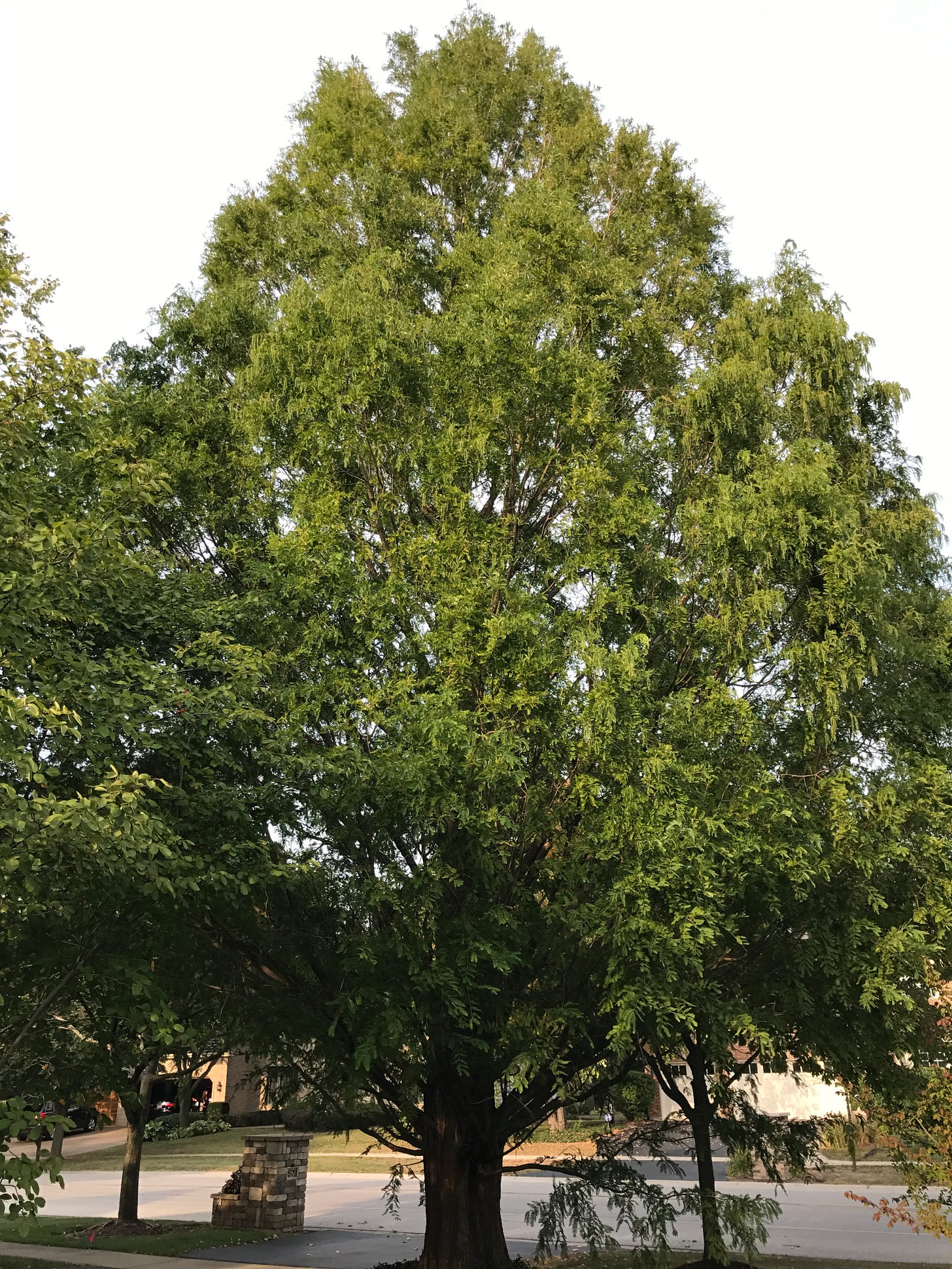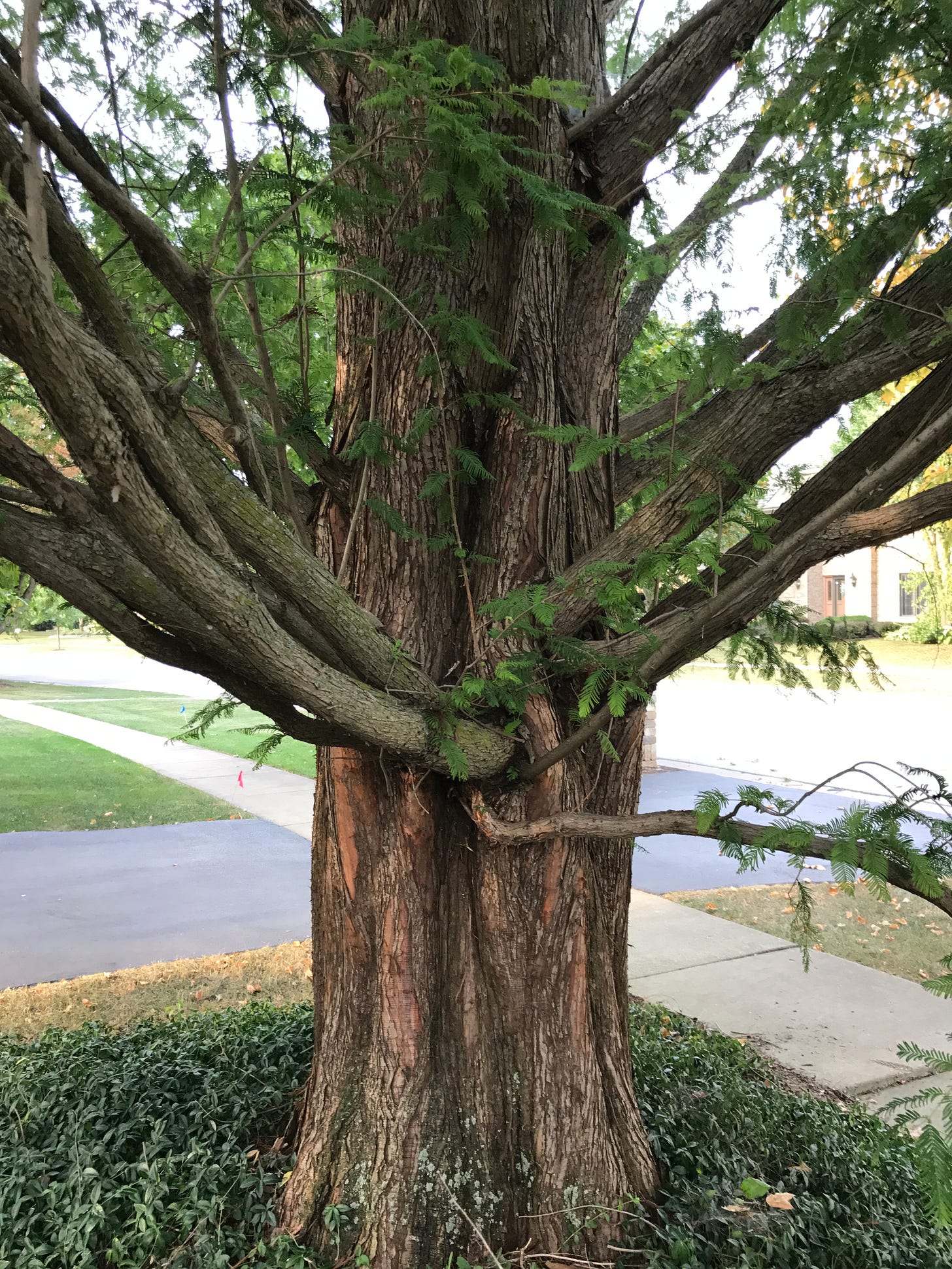The Morton Arboretum is renowned for its promotion of trees, conservation, and appreciation of the natural landscapes around us. It makes sense that Arbor Day (which for Illinois falls on the last Friday in April, aka today!) would be ever tied to the Champion of Trees, and in fact, was propagated by the Morton family.
J. Sterling Morton (father of Joy Morton, founder of the namesake arboretum) began the tradition of Arbor Day on April 10, 1872, in Nebraska. He endeavored to create a holiday centered around planting trees and increasing recognition of their value.
In an article written for the New York Botanic Journal about the Morton Arboretum, my grandfather quoted Illinois Governor Adlai Stevenson, speaking at a May 1952 Arbor Day event, saying, “the name of Morton cannot die as long as trees live.” This excerpt perfectly encapsulates how closely tied the Morton family and Morton arboretum were (and still are) to the cause of preserving and conserving trees.
Per a 1965 Morton Arboretum Quarterly, J. Sterling Morton would often say that “other holidays repose upon the past; Arbor Day proposes for the future.” This idea, that trees and conservation are irrevocably tied to the future both of humans and our planet as a whole, certainly seems worthy of a dedicated day, in addition, perhaps, to a smidgen of our attention each and every day.
Arbor Day at the Arboretum (and Riverby)
Naturally, the Morton Arboretum has held countless events for Arbor Day throughout its history. In 1939, the Arboretum partnered with DuPage county officials to hold a joint Arbor Day/Centennial celebration for DuPage County. The event brought together students from local elementary schools to plant flowering crabapples along the arboretum’s entrance. Even in the early days of the Arboretum, involving children in efforts to appreciate and preserve trees was clearly a focus!
In the Arboretum’s online archives, I was able to find a photo showing this event, which you can check out here.
Arbor Day was not merely a work event for my grandfather (and, I would assume, many of his colleagues felt the same). He described in his journals the plantings he undertook at Riverby, his home in Warrenville, to commemorate the day:
(Arbor Day) Fri. Apr 12, 1940
Our Arbor Day planting consisted of 2 roots of Anemone pateus, the Pasque Flower, contributed by Mrs. Kroehler of Naperville (she brought them from Money Creek, Houston Co, MN day before yesterday) Planted them along west path near the Monarda. Also 4 Aronia melanocarpa along east boundary.
In an article about the arboretum for the Garden Club of America, written collectively by my grandfather Lowell Kammerer, Clarence Godshalk, and May Watts, Arbor Day features prominently in the opening paragraph:
A commemorative Arbor Day Ceremony held at the Morton Arboretum on May 17, 1952, under the joint sponsorship of the Illinois State Historical Society, the Chicago Historical Society, and the DuPage County Historical Society honored three generations of the Morton Family…For this occasion, earth was sent from all 48 states, to be spread around three commemorative trees which were planted that day.
Clearly, the arboretum and its staff took great pleasure in celebrating Arbor Day, using it as an opportunity to forward the mission of the Mortons and their arboretum.
My grandfather dedicated his life to plants, trees, and landscapes. Although I’m only a non-professional tree enthusiast, I still feel it’s critically important to recognize trees and all they do for us and the ecosystems of which we are all a part. Being that today is Arbor Day, I’d like to shout out one of my personal favorite trees, a majestic, sprawling Dawn Redwood planted in front of my childhood home.
I’ve always loved the stunning coppery bark of this living fossil, and being one of only a few deciduous conifers makes this species especially unique.

In honor of Arbor Day, tell me about some trees (individual ones or species more broadly) that have special significance to you! I’d love to hear stories about how trees have touched your life as we commemorate these incredible florae.
Next week, I’ll be writing about how the Morton Arboretum evolved over the time my grandfather worked there (from 1929-1966), including expansion of the roads which surround the arboretum and changes to buildings and landscapes that occurred through the mid-twentieth century. (Also, a critical take from my grandpa on a popular arboretum feature that truly surprised me!) If you have any specific questions related to changes in the arboretum’s shape and structure during this time period, let me know and I’ll be sure to look into what my grandpa might have written about them!
Thank you for subscribing! And if you’re not subscribed yet, you can do that right here. You can get newsletters for free, but there are also paid subscriptions that will offer you access to additional content (coming soon!)
If you have topics you’re interested to hear more about or specific trees you’re interested in, please feel free to let me know in the comments.
If you like what you’ve read so far, sharing Bulletin of Remarkable Trees with your friends would help a whole lot!





And it’s also Bird Day but the why never fully understood